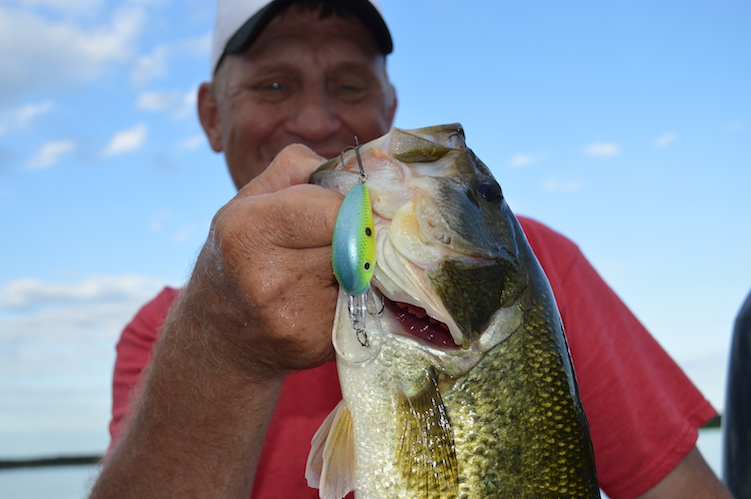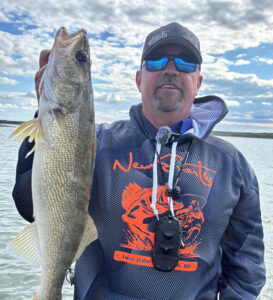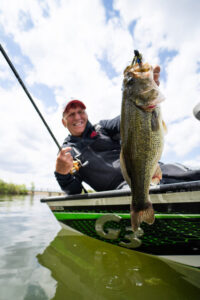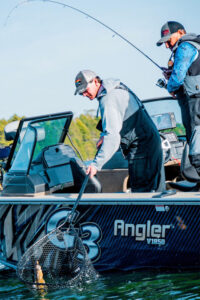
by Bob Jensen
Anglers today have a wide assortment of baits available to them in their efforts to catch some or more fish. Crankbaits are a very popular type of bait for several reasons. Perhaps the most important reason is that they will catch a wide variety of fish under lots of different conditions. However, there’s more to it than just tying on a crankbait and putting it in the water. As the open water fishing season gets closer and anglers are visiting tackle shops, here are some things to keep in mind when it comes to catching fish on crankbaits.
There are lots of variables when selecting a crankbait. Lure shape, size, color, running depth, and action all are part of the equation. To start, consider the shape of the fish that you want to catch. Walleyes are longer, thinner fish, and they feed mostly on longer, thinner baitfish. Perch and smelt are long, thin baitfish and are high on the preferred menu of walleyes. Much of the time a longer, thinner crankbait such as a Lucky Shad will be better for walleyes. Not always, but often.
Now look at a largemouth bass. They’re shorter and fatter in stature. They like to eat bluegills and shad, which are shorter and fatter baitfish. Much of the time a shorter, fatter crankbait, something like a 5XD or 6XD will be better for largemouth bass. Again, not always, but often.
This doesn’t mean that short, fat crankbaits won’t catch walleyes, because they will, and longer, thinner crankbaits will catch largemouth bass. What we want to do though, is put the odds in our favor. Usually longer, thinner baits will be better for longer, thinner fish and shorter, fatter crankbaits will be better for shorter, fatter fish. And again, not always, but often.
Let’s consider crankbait color. There are so many colors, and they’ll all catch fish. Many walleye catchers like firetiger, perch, black back/silver, purple back/silver or blue/back silver. You’ve got to have some baits in chartreuse and there are times when orange back/silver is outstanding. Most of the time one of those color patterns will work for walleyes.
Largemouth bass like bluegill and crawfish colored baits, and they also like blue/chartreuse and shad colors. Try brighter baits when the water has some color and more natural appearing baits in clear water.
A bit about running depth. Sometimes you want your bait banging the bottom, other times you want it to run above the bottom at a certain level. In stained or dirty water, the fish will often be right on the bottom, and their vision is limited due to the water color. In this situation, a bait that’s banging the bottom and making noise will take more fish because they can find it easier.
In clear water fish can see better so they’ll move farther to take a bait. This is when it’s important to keep the bait a bit above the level where you think the fish are holding. Fish can see up better than they can see down, so it’s better to keep your bait above them.
When it comes to size, the more active the fish are, the bigger the bait should be. You’ll usually catch bigger fish on bigger baits. This is interesting though: In the cold waters of spring, smaller baits will often produce well, while in the cold waters of autumn bigger baits are good.
When you’re using crankbaits to catch fish, actually whatever type of lure you’re using, keep the phrase “Not always, but often” in mind. Start with a bait that you think the fish will like. If they like it, good deal. If they don’t, try something different. Keep trying different baits until the fish reveal what they want and you’ll catch more fish more often. Not always, but often.
PHOTO: This largemouth bass wanted a typical largemouth crankbait. Short and fat, chartreuse and blue.




